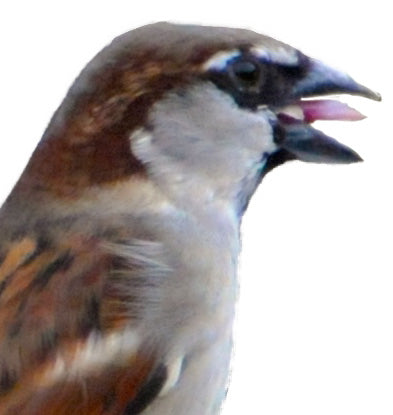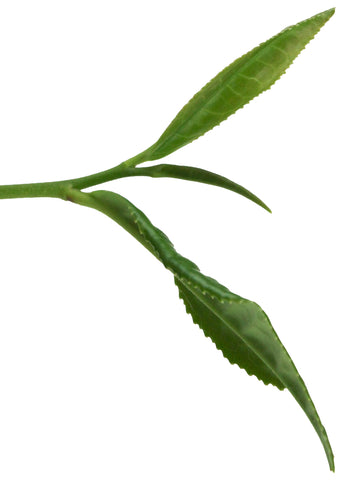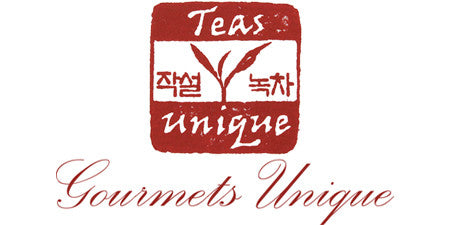About Korean Tea
The Sparrow's Beak
At Teas Unique, the green tea we sell is referred to in Korean as Jaksul Nokcha meaning Sparrow's Beak Green Tea. In fact, the Hangul (Korean) in our company logo at the top of the page says the same thing (작설녹차).
Jaksul refers to the shape of the iconic "bud and two leaves" found at the tip of spring growth on the camellia sinensus bush. Do you see the resemblance in the photos below?
Jaksul Nokcha is handpicked, artisan, whole leaf tea. It is among the finest in the world.

|
 |
Camellia Sinensus is Real Tea
All authentic tea the world over is made from the leaves of only one plant: the camellia sinensus bush. There are numerous varieties of camellia sinensus suited to different climates and offering different taste characteristics. Korean tea is made from the leaves of the camellia sinensus var. sinensus variety, which is the same variety most commonly found in China and Japan. Different varieties are better suited to the hot climate of South Asia. Yes, camellia sinensus is a camellia bush, related to the ornamental varieties originally developed in Japan and now so commonly found in gardens throughout the temperate regions of North America.
How to Steep the Perfect Cup
There are no hard and fast rules about how to steep the perfect cup of artisan Jaksol whole leaf tea. Our advice is to experiment and see what works best for you and suits your particular tastes. Having said that, there are a few helpful words of wisdom that we have learned from others and from personal experience that you may find useful.
- Always enjoy your tea in a white cup. That may sound funny, considering all the great colors that teacups come in, but there is an important reason for this suggestion. The color of your tea liquor (liquid) is one of the three critical elements experienced when enjoying this beverage (taste and smell being the other two). If you don't have a white cup, you cannot see what the tea liquor actually looks like, so you will miss out on this element.
- Steep your tea in a teapot and always measure the hot water you put in so that it will equal exactly the amount of tea liquor (liquid) you will be pouring out. If you are planning to pour two cups of tea, then only put two cups of hot water into the pot. The reason for this is that you never want your tea leaves sitting in water for longer than your desired steeping time.
OK, so how do we steep the perfect cup of whole leaf tea?
Steep your tea in a teapot with a strainer. The strainer will prevent the tea leaves from escaping into your cup. Do not use a tea ball or something similar. The tea leaves need to be free to float and move about in the water in order for their full flavors to be released. We personally prefer a clear plastic or glass teapot (you can watch the tea steeping and based on the color of the liquor, make a better judgment on steeping time), but any teapot with a strainer will do.
Measure your tea leaves into the pot. The amount you need will depend on the number of cups you are planning to pour and the strength of the tea desired. The more tea leaves you put in, the shorter the needed steeping time to get approximately the same strength. Experiment and learn what works for you. Start with one teaspoon of tea leaves per cup and adjust as needed to suit your tastes.
Heat the water. Different tea drinkers will perfer different water temperatures, but in general, the recommended water temperature for steeping green tea is around 180° F (80° C). We personally prefer a hotter steep (200° F), but that is just our personal preference. If you don't have a food thermometer, don't worry, you'll be fine. Just bring water to a boil, then let it sit off the heat for 5 minutes. Again, experiment and see what works best for you.
Measure the water. Use your teacup to measure the hot water into the pot. You will want to pour off all the liquid after the steep is complete.
Time the steep. Now you are making tea liquor (liquid), and the timing is critical. Generally, artisan whole leaf teas will need to steep for longer times than will finely chopped teas (what you may be used to drinking), since the surface area of whole leaf tea is less and the plant cell walls have not been crushed. Approximately 2 minutes of steeping time is generally recommended, although we personally prefer a shorter steep with more tea leaves per cup. If you have a clear glass or plastic teapot, you can keep an eye on the color of the liquor as it steeps, and that can help you make a determination of when it is ready to pour.
Pour the steeped tea into your cup or cups. Notice and appreciate the color of the liquor. Smell the aroma. Sip and taste. Can you imagine the spring buds of the Ujeon? The deep green leaves of the Daejak? Did the steep meet your expectations? Should you use more or less tea leaves next time? A longer or shorter steep time? Observe, remember and learn from your experience.
Make more tea! Artisan Jaksul teas are to be enjoyed with multiple steepings of the same leaves. So after you have enjoyed that first cup, measure some more hot water into the pot and do a second steep (do not add more tea leaves). Your second steep will often not need as much time as the first, because the leaves are by now fully soaked, opened and releasing their flavors more readily than they were when they were dry. Pour the steeped tea into your cup and enjoy. Do you notice differences from the first steep? Most artisan Jaksul teas are good for three to four steepings (the third and fourth will need to be for longer times than the first, as the leaves now have diminished flavors). Experiment and see what works best for you and what you most enjoy.
How to Use Green Tea Powder
Powdered green tea is made from whole leaf green tea (just ground into a super fine powder), but drinking it is an entirely different process. In addition, green tea powder can be used in all sorts of other culinary applications, such as cakes, smoothies, ice cream, milkshakes, lattes, etc.
To enjoy a traditional powdered green tea beverage, just add 1 teaspoon of green tea powder to 2 to 4 ounces of hot (180° F (80° C)) water in a small bowl. Then whisk it until a nice head of froth develops. Enjoy!
Learn More
To learn more about Korean tea, be sure to visit our pages on the History of Korean Tea, the Tea Growing Regions of Korea and Korean Tea Grades.
